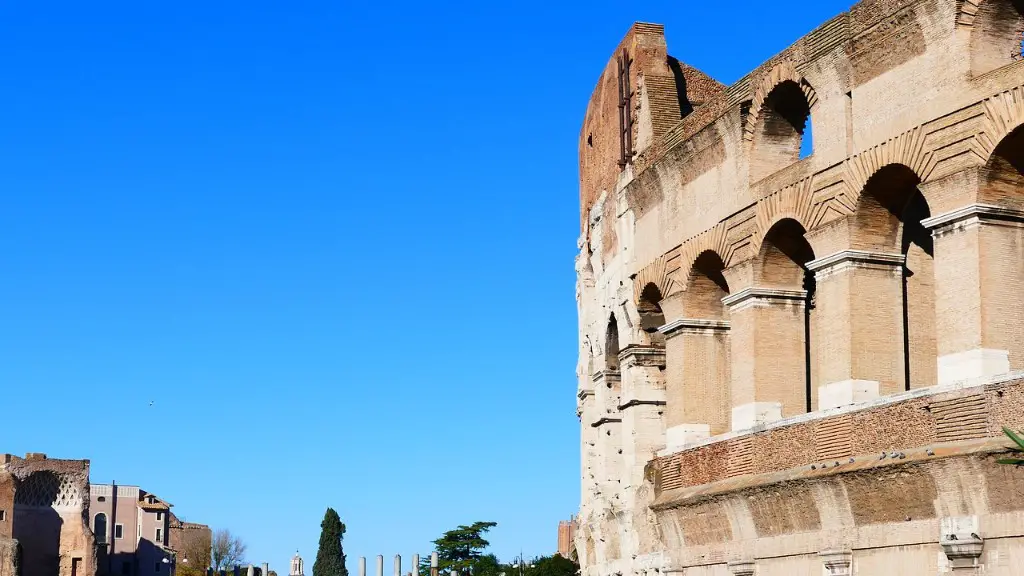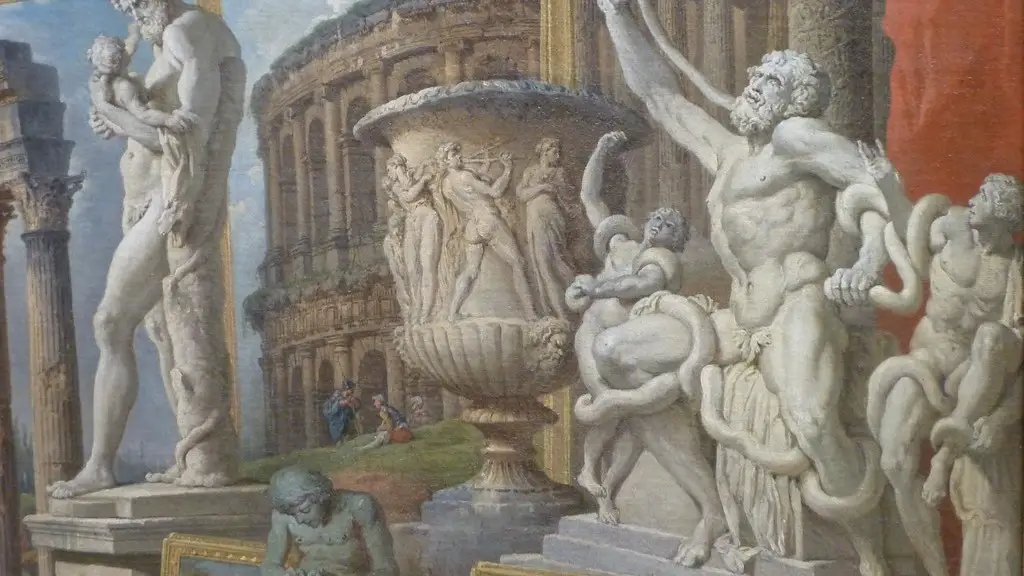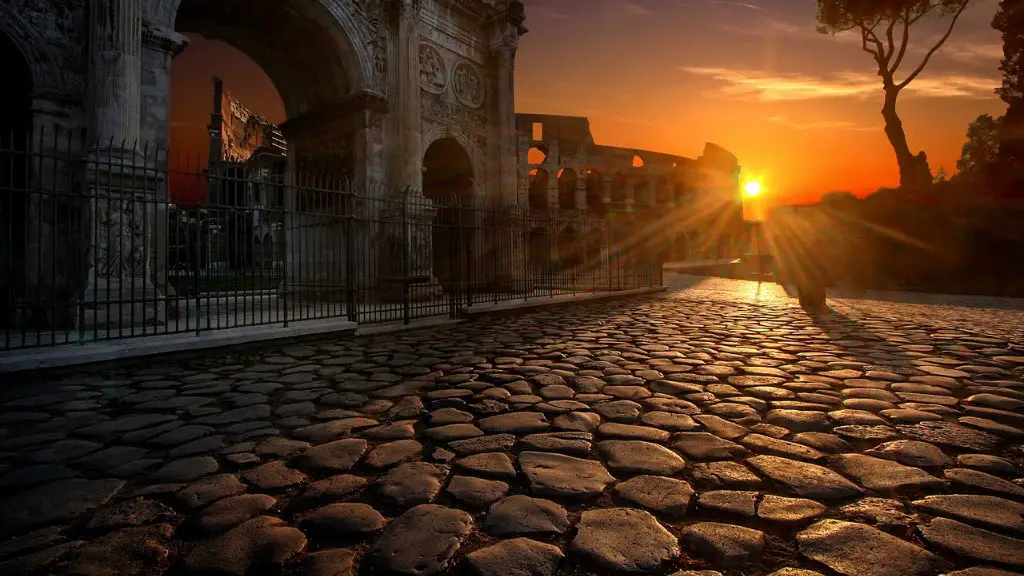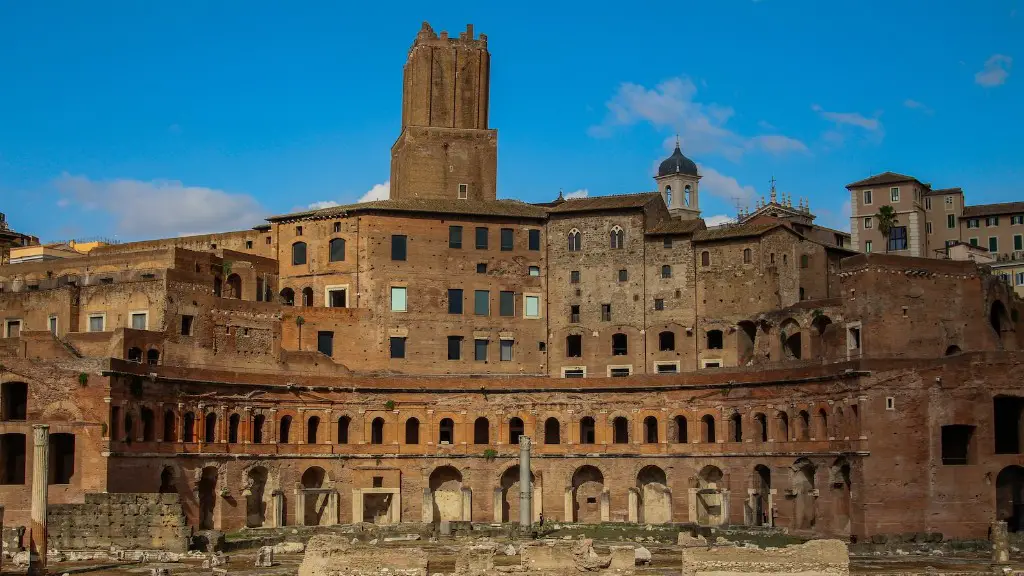Ancient Roman Social Classes
Throughout its thousand year existence, Ancient Rome had a complex social order that was heavily influenced by the class structure of their society. The social structure was divided into three classes – the slave, the plebian and the patrician.
The lowest form of social class was the slave class. Slaves were brought from all corners of the ancient world and used for a variety of purposes. Slaves were not given any rights, nor could they own property. Many were considered to be property of the household and could be bought and sold like any other commodity. Despite their low social standing, some slaves did enjoyed some privilege and power, such as those who were able to gain their freedom, or even those who served in important roles within the household.
The plebian class was composed of small farmers, merchants, artisans and laborers. They were the original Rome citizens and had the right to vote, a right that was denied to the slave class as well as the patrician class. However, they were often exploited by the higher classes and did not enjoy the same level of political power, respect and status as the other classes.
The patrician class was the upper class of ancient Rome.this class was composed of wealthy landowners and the noble families.They enjoyed all the rights and privileges that were denied to the plebian and slave classes. They owned most of the land and had the highest possible political authority. This class was also responsible for choosing Rome’s most influential leaders, such as the consul who was the top magistrate and military leader in Rome.
The Ancient Roman social classes played an important role in the functioning of the city. They provided the structure and stability that was needed to last as long as it did.
Impact of Ancient Roman Social Classes
The slave, plebian and patrician classes had a significant impact on the political and cultural aspects of ancient Rome. They determined the rights and privileges of each class and shaped the laws and policies of the city for centuries.
The slave class formed the pillar of Roman economy and was the backbone of their society. Without the massive influx of slaves Rome wouldn’t be able to sustain its growth and power. Despite their lowly status, some of these slaves were educated in the Roman way of life and conferred valuable knowledge and skills to the city.
The plebians provided Rome with the contented, stable middle class and the primary source of law and order. They were the largest class in Rome and provided a sense of stability and legitimacy to Roman government. They also formed the militia, fighting in the army and providing an important source of military strength.
The patricians provided a pathway to leadership, forming the core of Roman politics. They were in charge of the most important political positions and held the highest authority in the city. Patricians were also responsible for preserving Roman culture and traditions and keeping the city in order.
The divisions of the social classes in Ancient Rome had a huge impact on their society, shaping its laws, policies, culture and economics profoundly.
How Social Classes have Changed
Since the fall of Ancient Rome, the social classes have remained an important factor in societies throughout the world. While the architecture of social classes is greatly different today, class divisions still exist and can be seen through economic and political power.
In modern societies, these divisions are less based on birth and descent and more based on economic status. Nowadays, class can be seen in education, occupation and income levels. Those who are more educated, highly paid and have vocational qualifications are more likely to be in the upper class, while those with less education, money and job prospects may be found in the lower-middle or working classes.
Though there has been a shift in modern societies, social classes continue to play an important role in the functioning of our economies working and the political landscape. Even if the Roman social class structure is no longer extant, its legacy remains in modern societies in numerous ways.
Causes of Social Classes
The cause of social classes can be attributed to a variety of different factors. Cultural and historical influences play a large role, while education levels and occupation can also have an impact. Geography can also play a role, as living in certain areas can bring access to various resources and opportunities.
Modern societies are also characterized by race, ethnicity and gender. Certain races and genders can face oppression and inequalities which in turn can lead to social class systems. Social classes are not limited to just a few demographic characteristics, however, and include a variety of other qualities such as education level, occupation and income.
Understanding the causes of social classes is important in order to move towards a more equitable society. Knowing the various factors that cause social classes can help develop policies and actions to promote fairness and reduce inequality.
Benefits of Social Classes
Despite the negatives associated with social classes, there are also some benefits. Social classes create a structure that can be used to fairly organize and distribute resources.
Social classes can also provide individuals with a sense of identity. By knowing where they stand in society, it can help foster feelings of pride and belonging. This can be especially beneficial for those of the lower classes, who may feel isolated and marginalized otherwise.
Social classes can also motivate those at the lower rungs, providing them with the ambition and determination to strive for a better future. Social classes can also provide an entryway into higher levels of society, which can ultimately lead to more equal outcomes.
Though social classes have their drawbacks, there also can be beneficial results from such structures. It is thus important to recognize and consider both the positives and negatives when considering social class systems.
Prevalence of Social Classes
Social classes have been and still remain a controversial topic in many societies today. While most acknowledge the existence of some form of social class structure, there is a lack of consensus on how this should be handled.
In some countries, such as the United States, there is a concerted effort to reduce inequalities and reduce the extent to which social classes define access to resources. In other countries, the existence of social classes is seen as a necessary part of society and the various benefits are embraced.
Though the subject of social classes is complicated and divisive, there is no doubt that some form of structure is needed in order to create and sustain a functioning society.It is therefore important to understand and accept the prevalence of social classes and to strive our best to make sure that everyone can access the same resources and opportunities.
Conclusion
The three social classes of Ancient Rome were the slaves, plebians, and patricians. These classes were based on status, power and wealth and significantly impacted Roman society at the time. The divisions of social classes still exist today and modern societies take a range of approaches towards dealing with them. Understanding the causes of, benefits of and prevalence of social classes are important in order to move towards an equitable society with reduced inequality.





